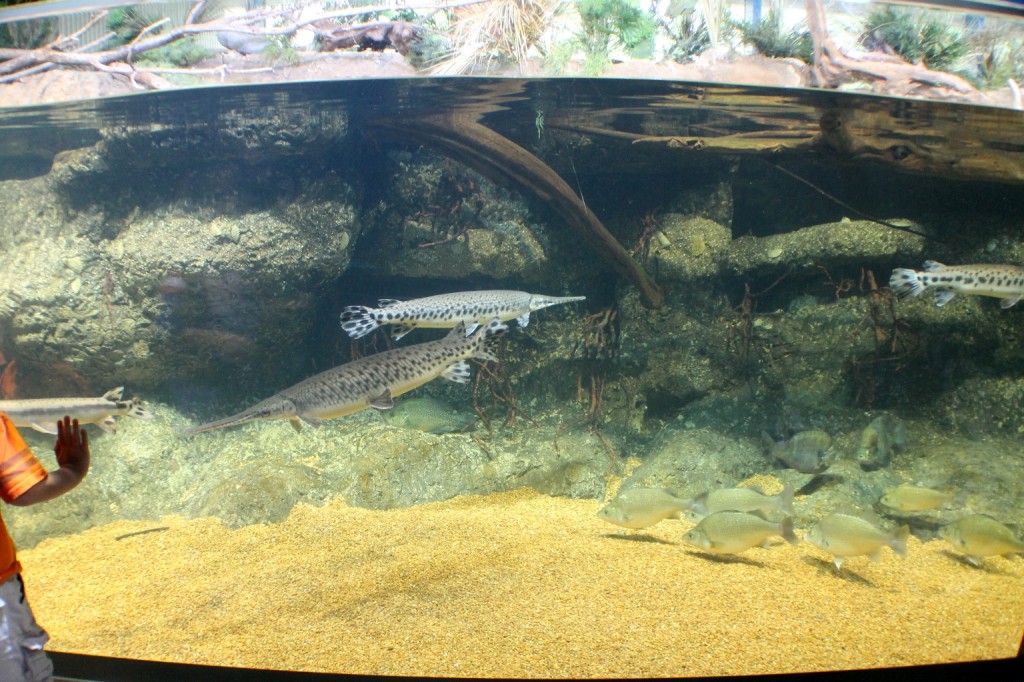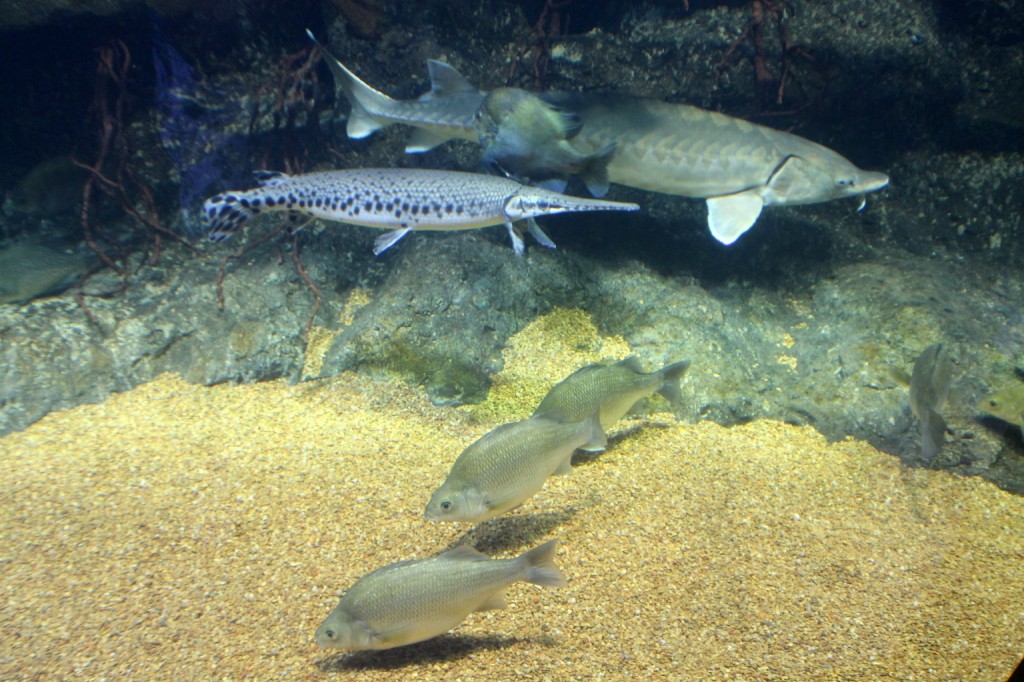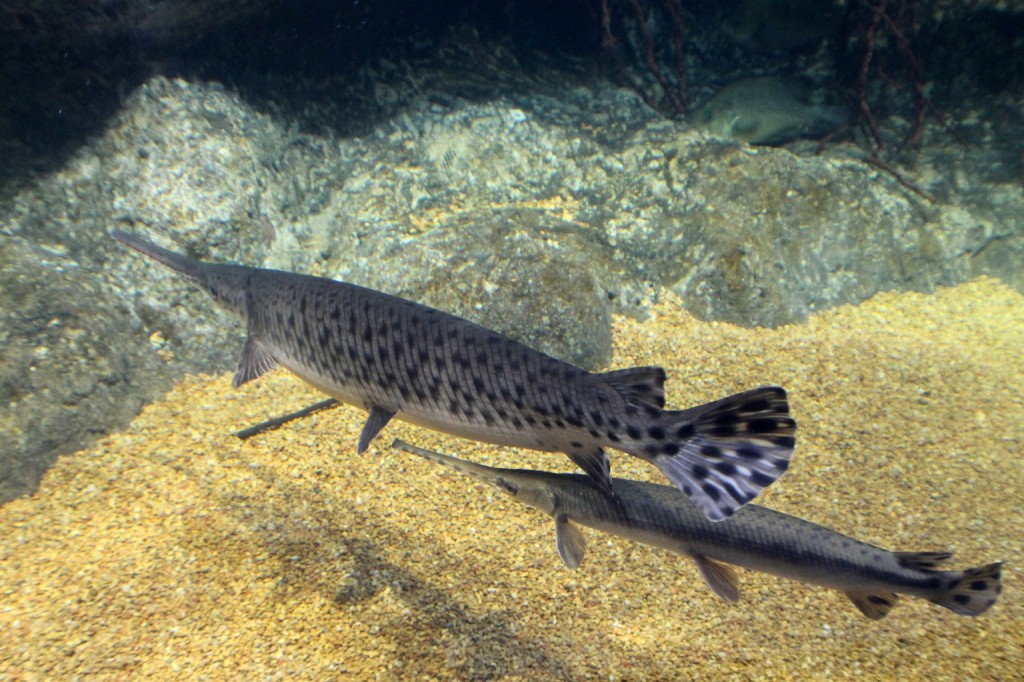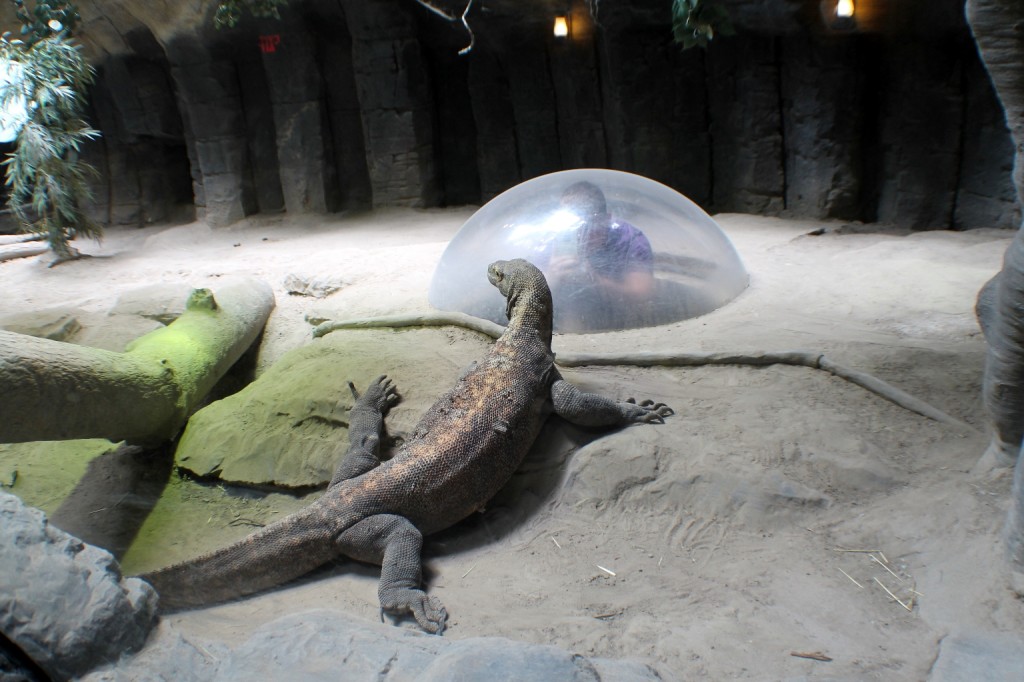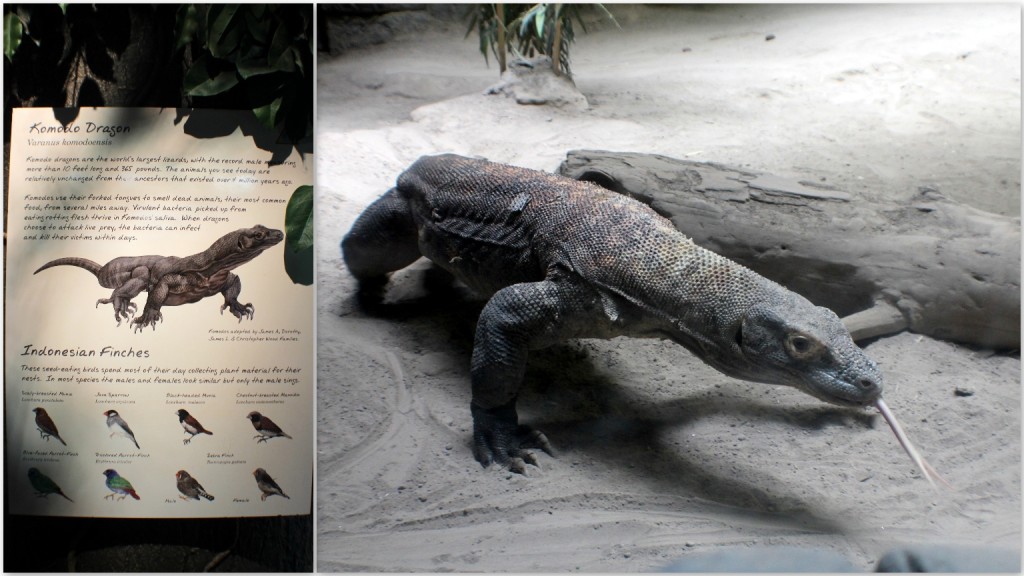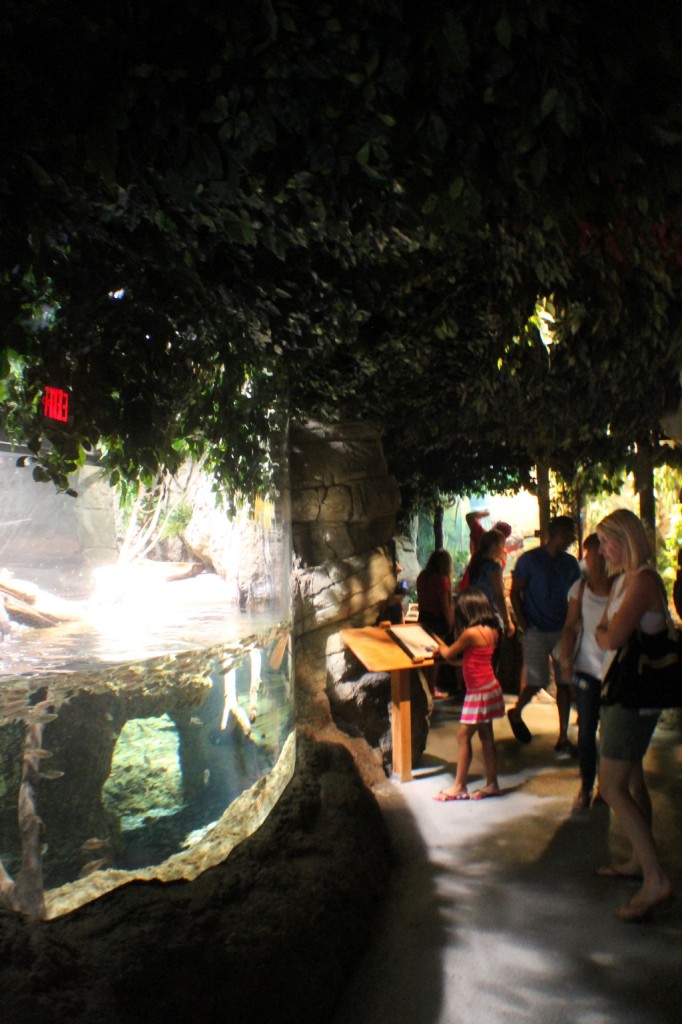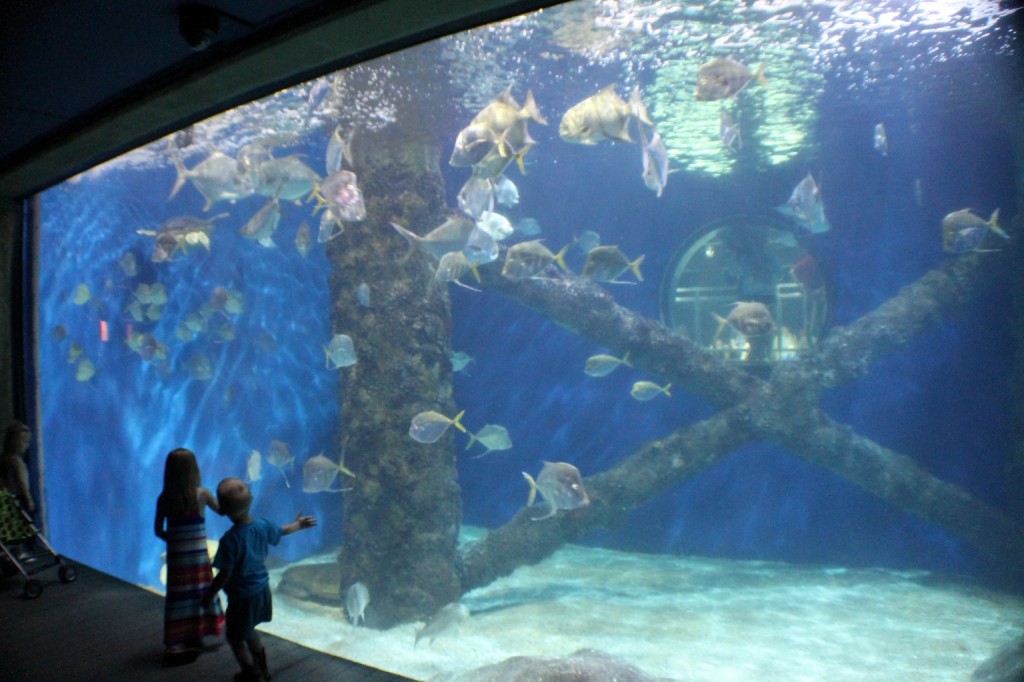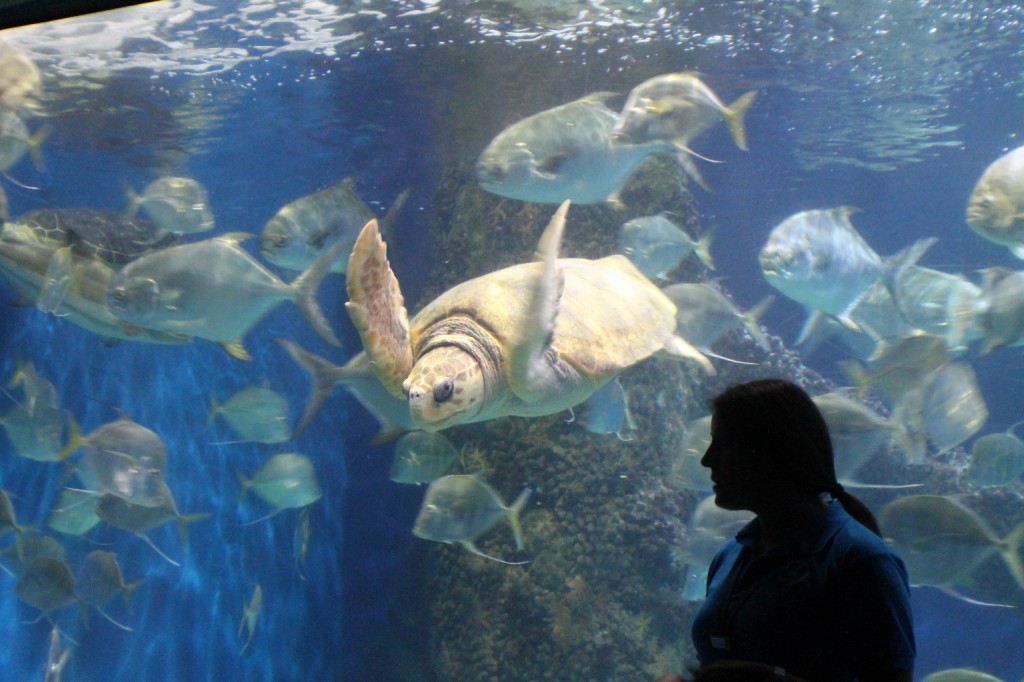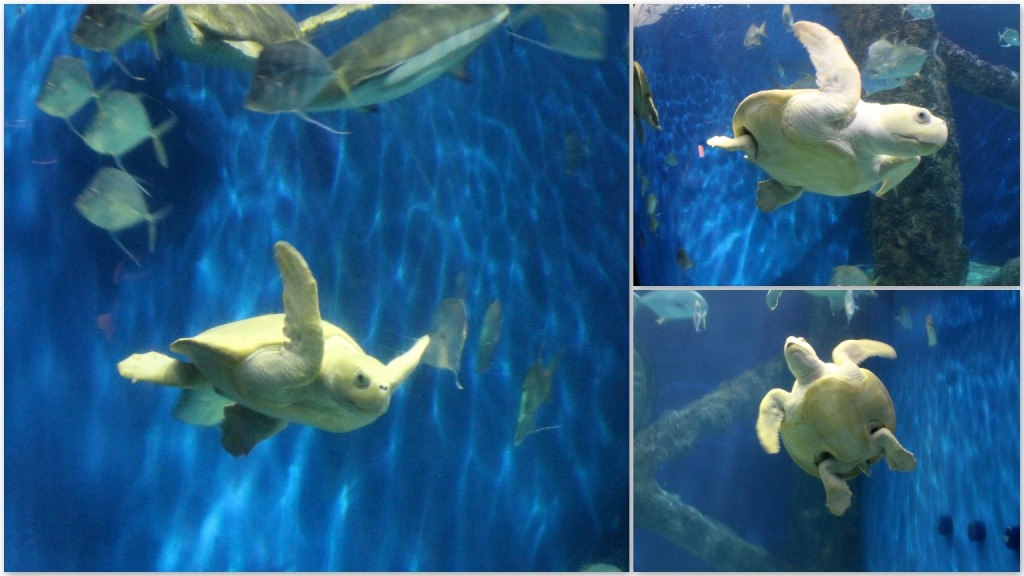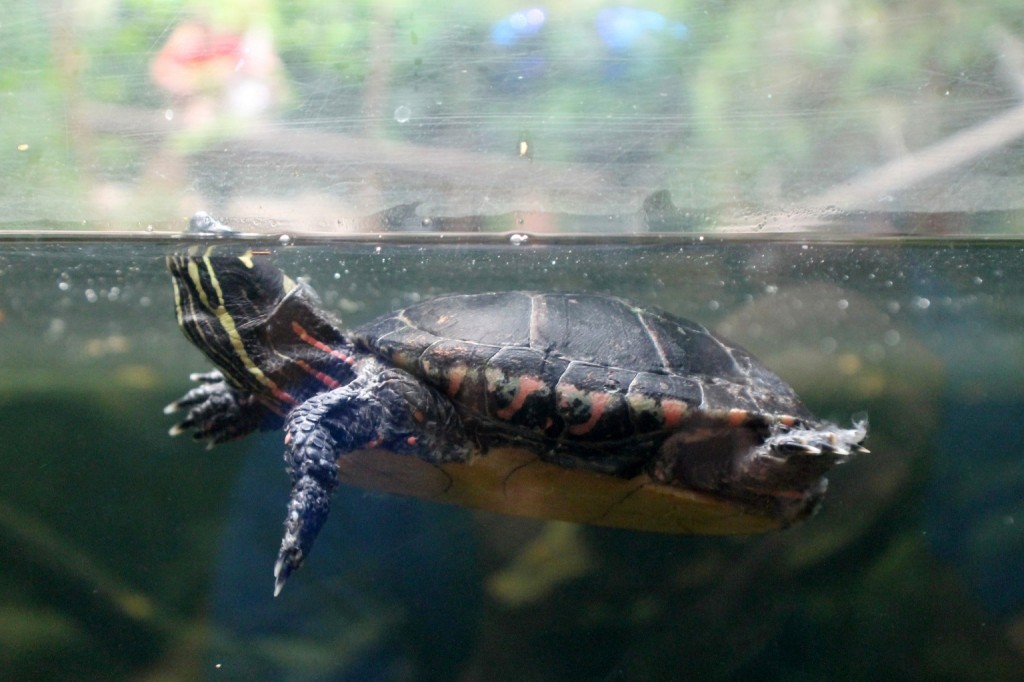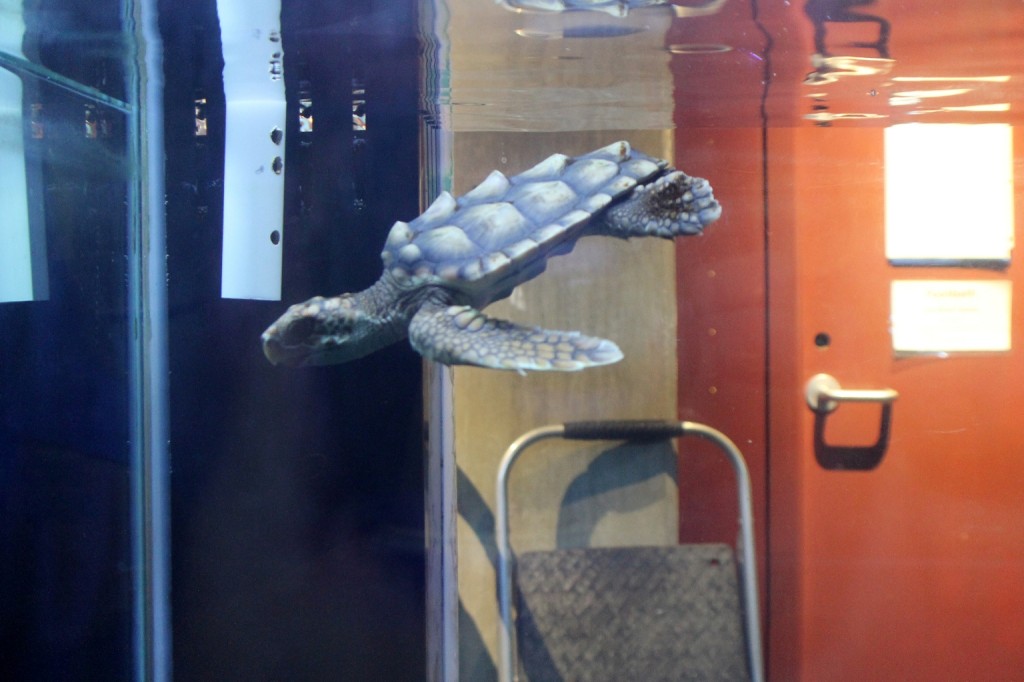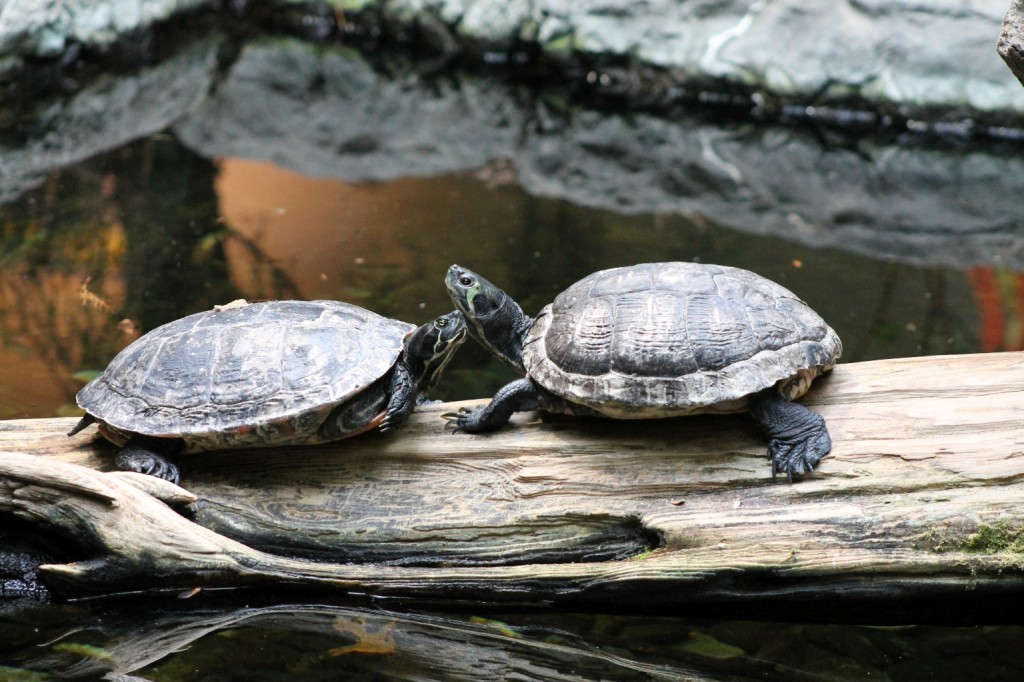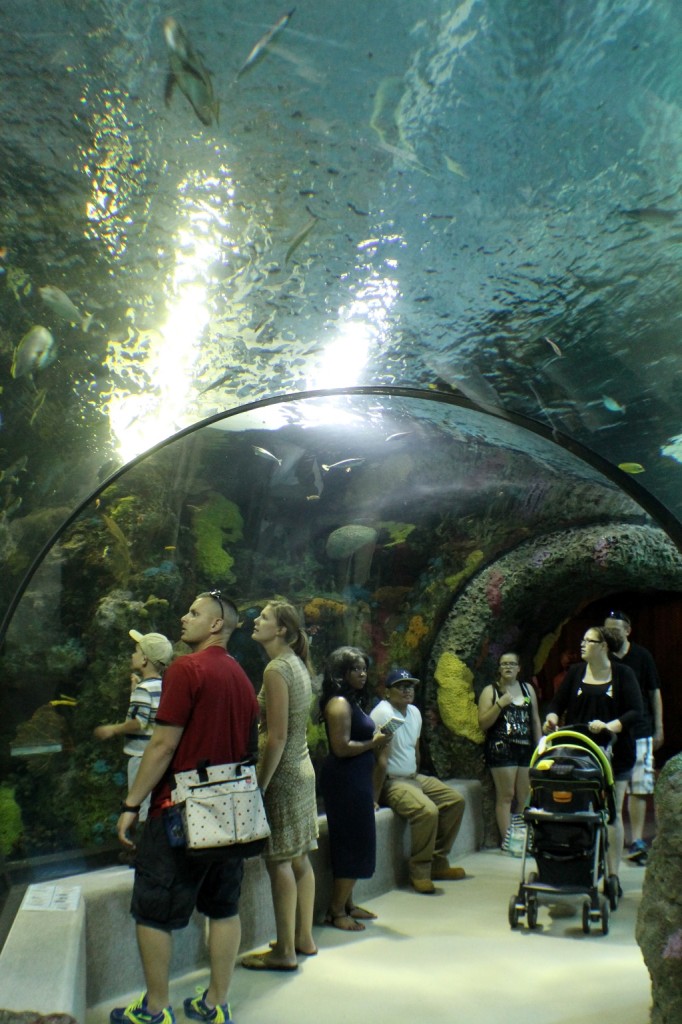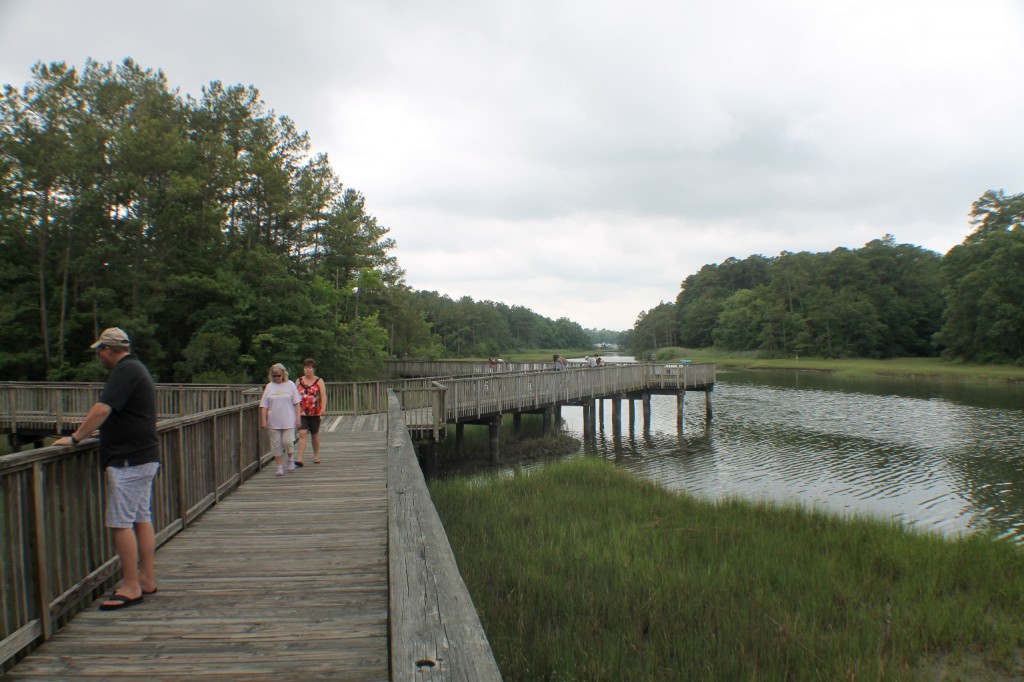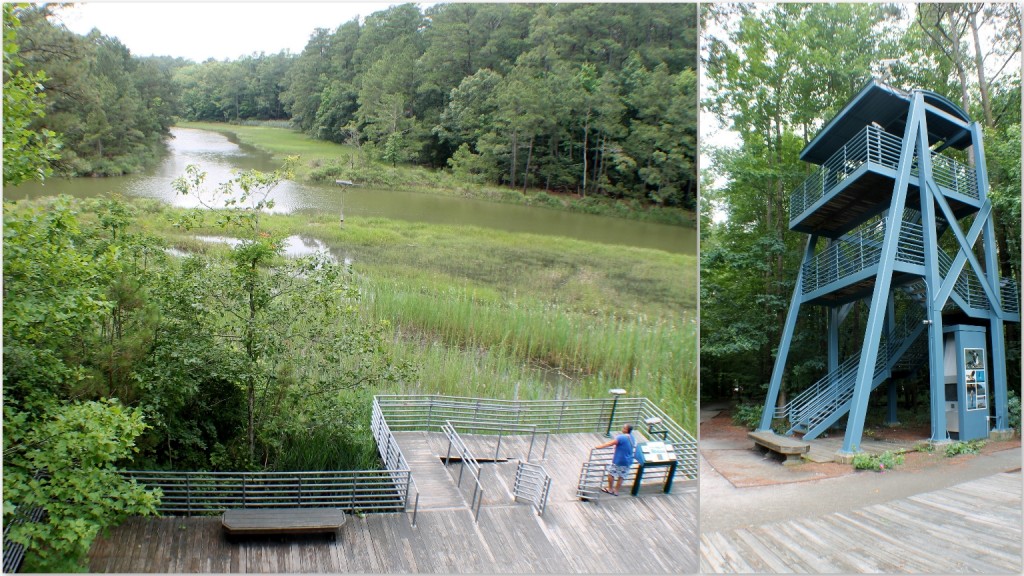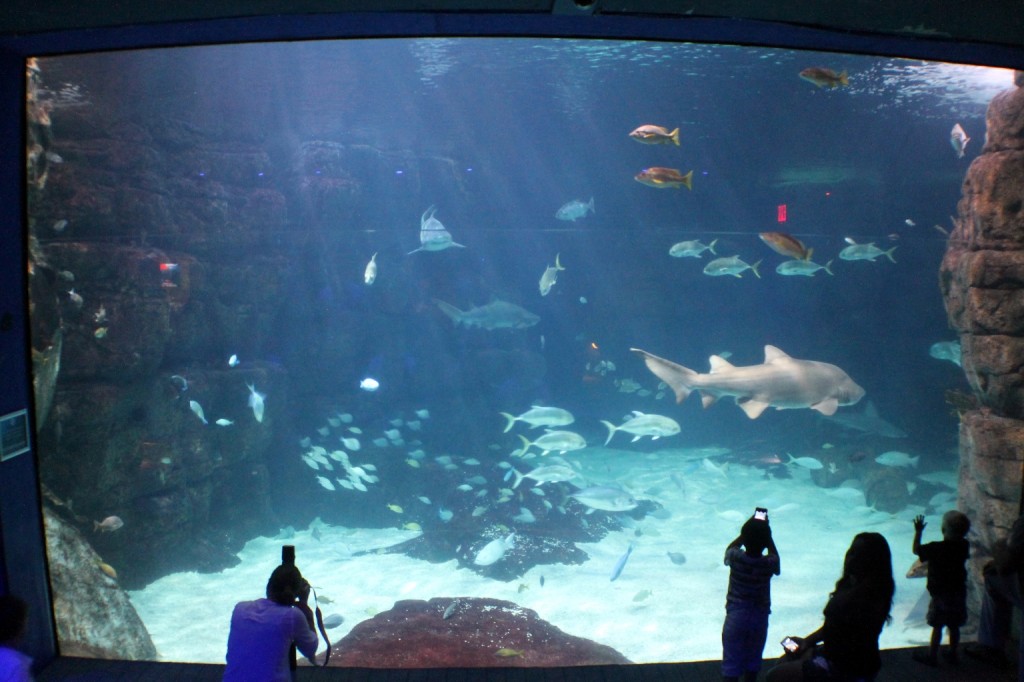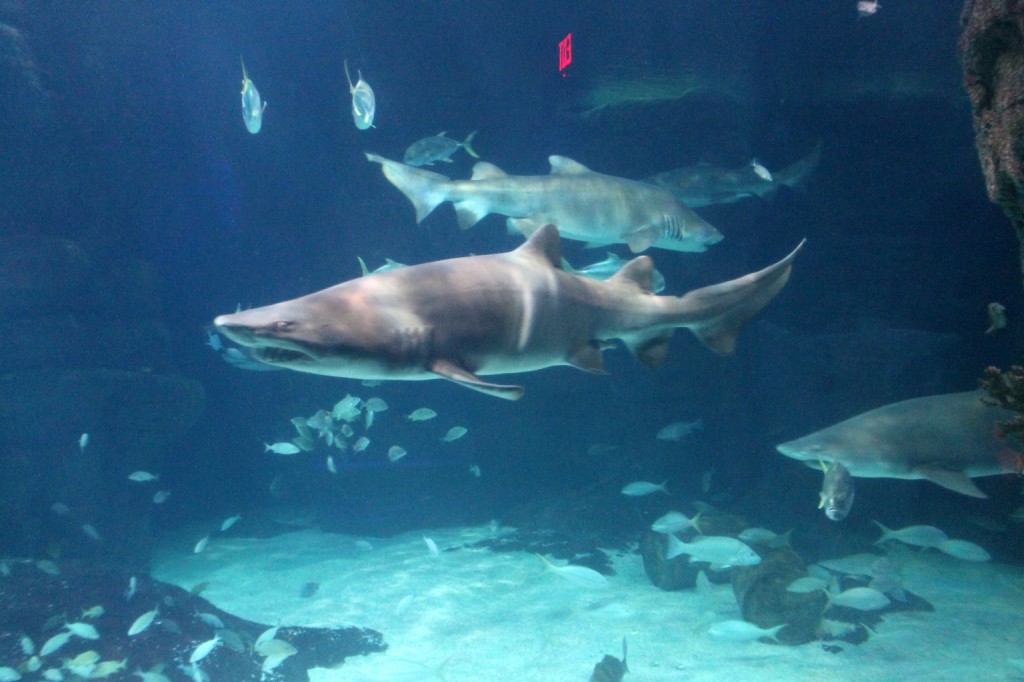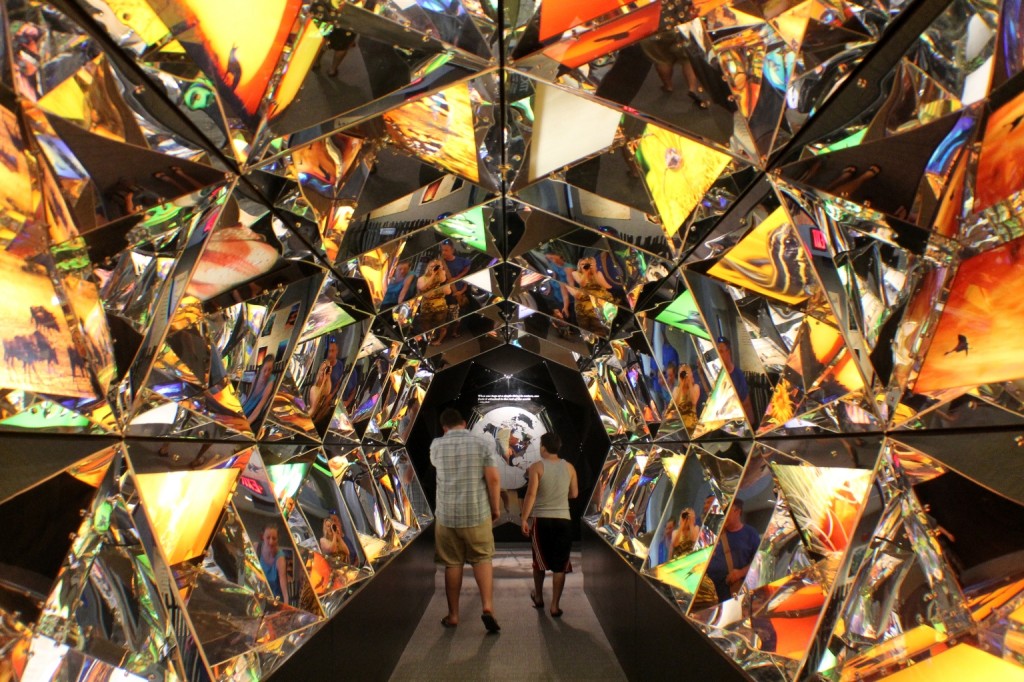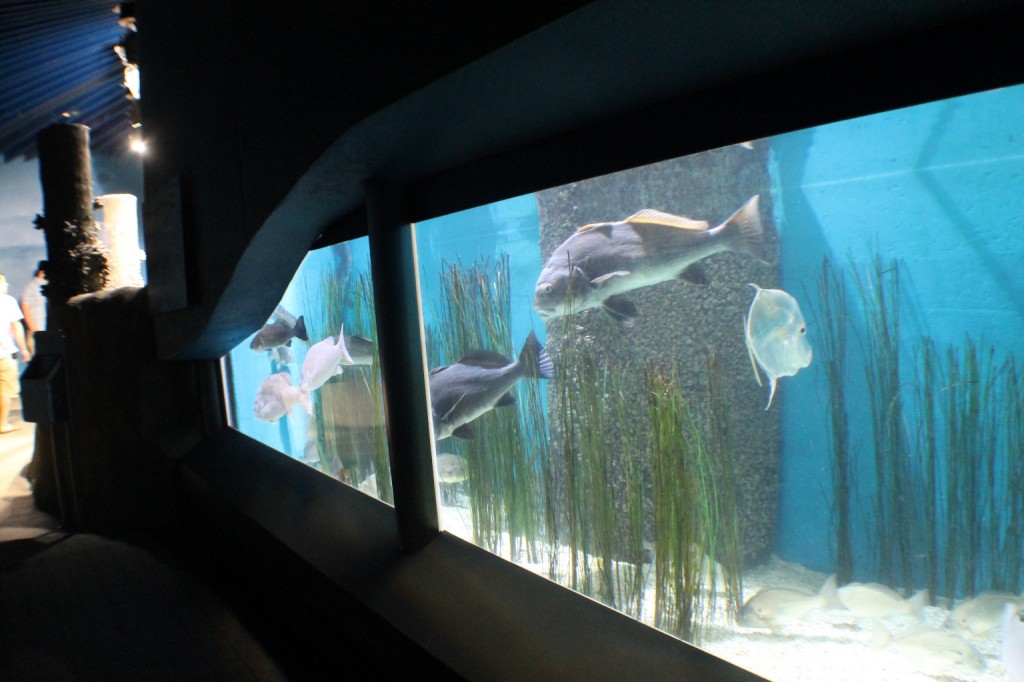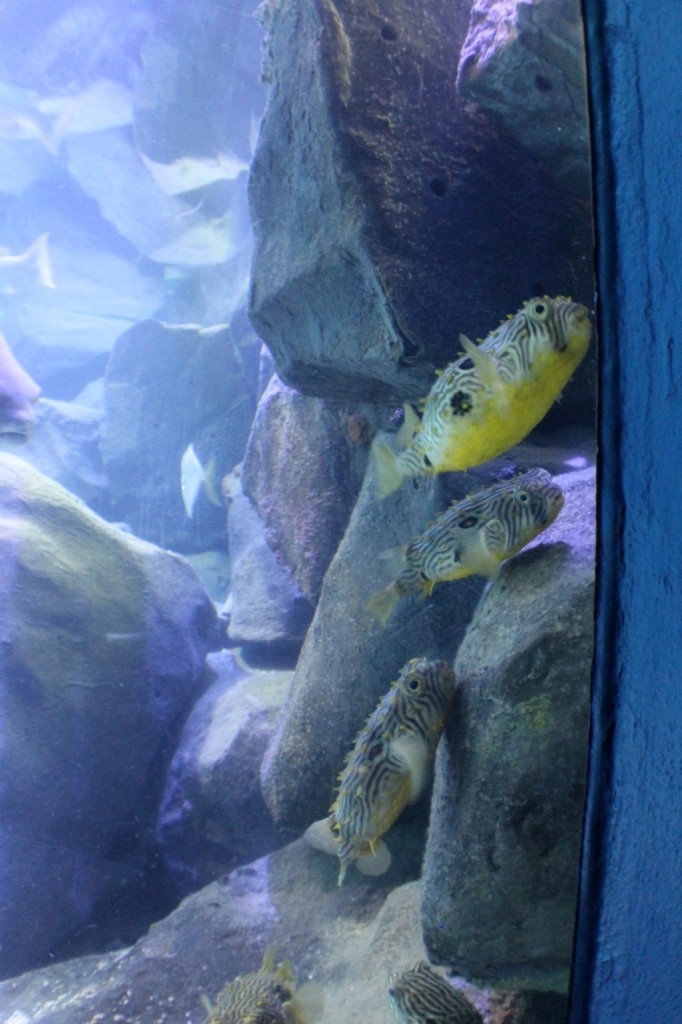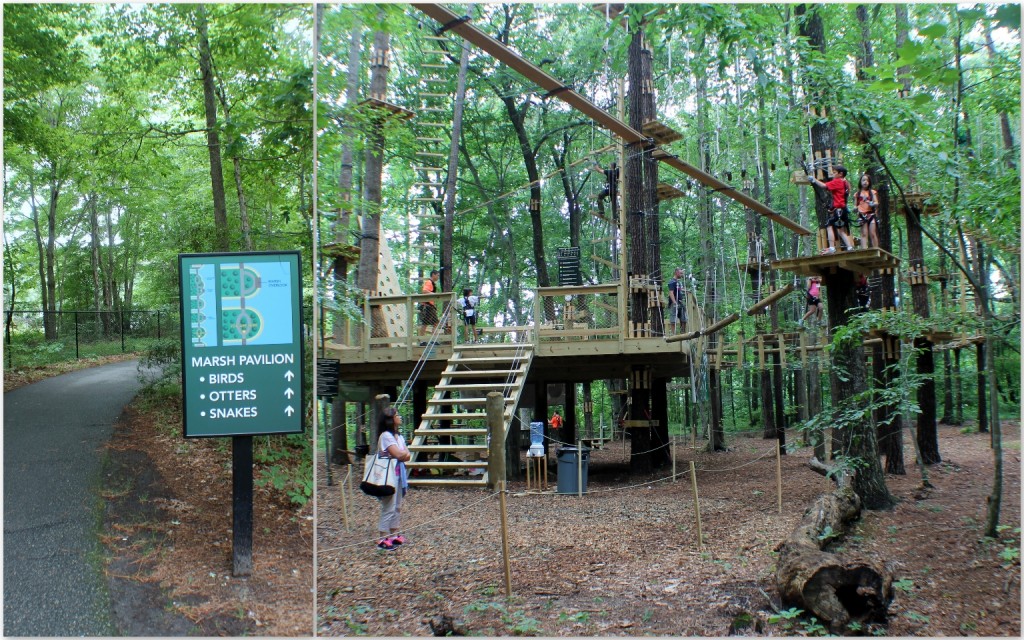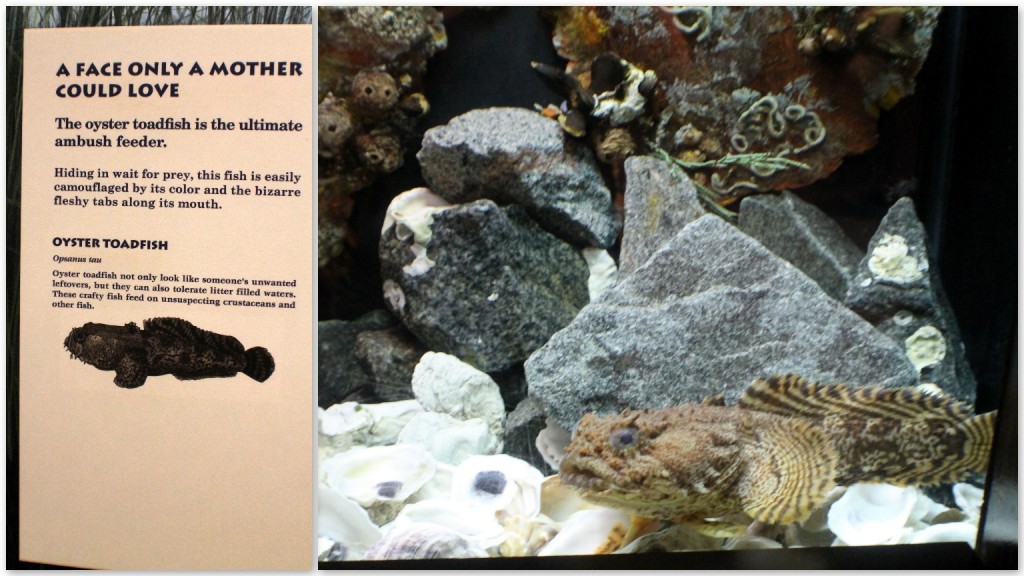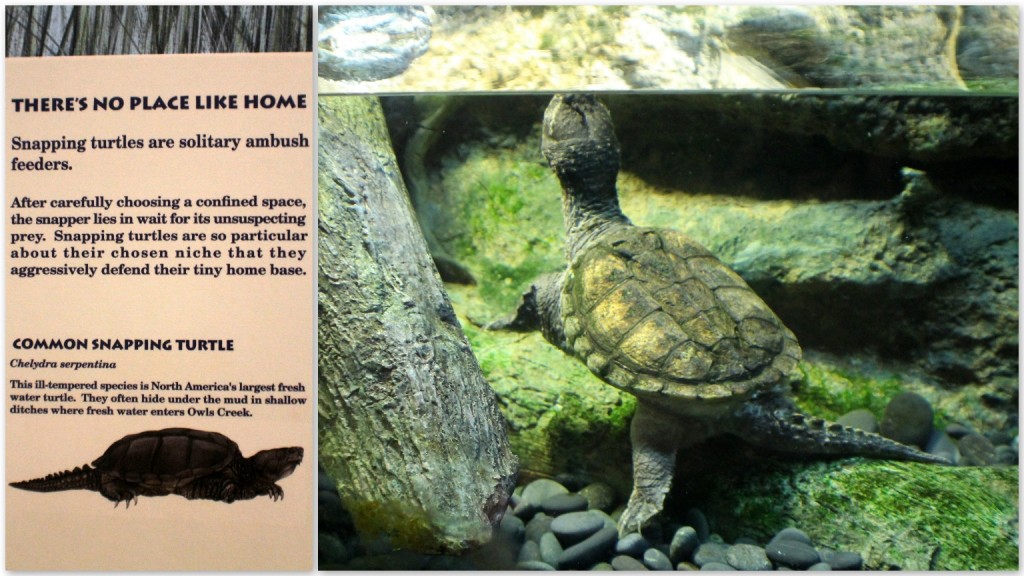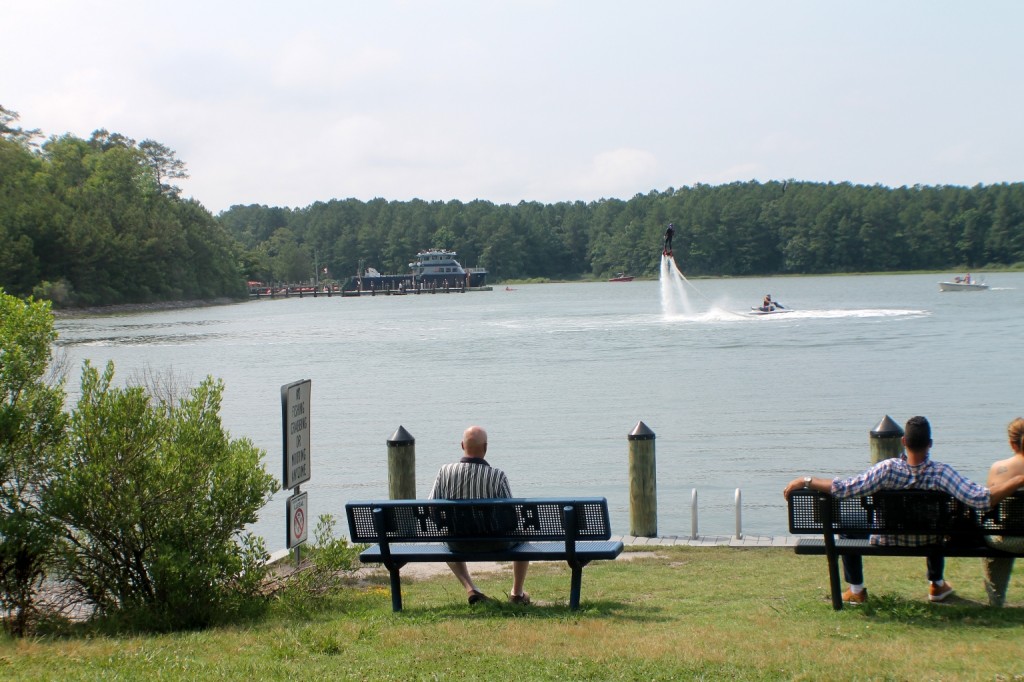Being in VA Beach, we couldn’t miss the opportunity to visit the Virginia Aquarium. The complex has marine life exhibits, aquariums, touching tanks, historical exhibits, nature trails, boat tours and more. There are 2 buildings and a nature walk in between them where you pass by an adventure/obstacle course and an aviary. The birds are mostly varieties that are found in and around the Chesapeake Bay, and are a part of the wetland ecosystem.
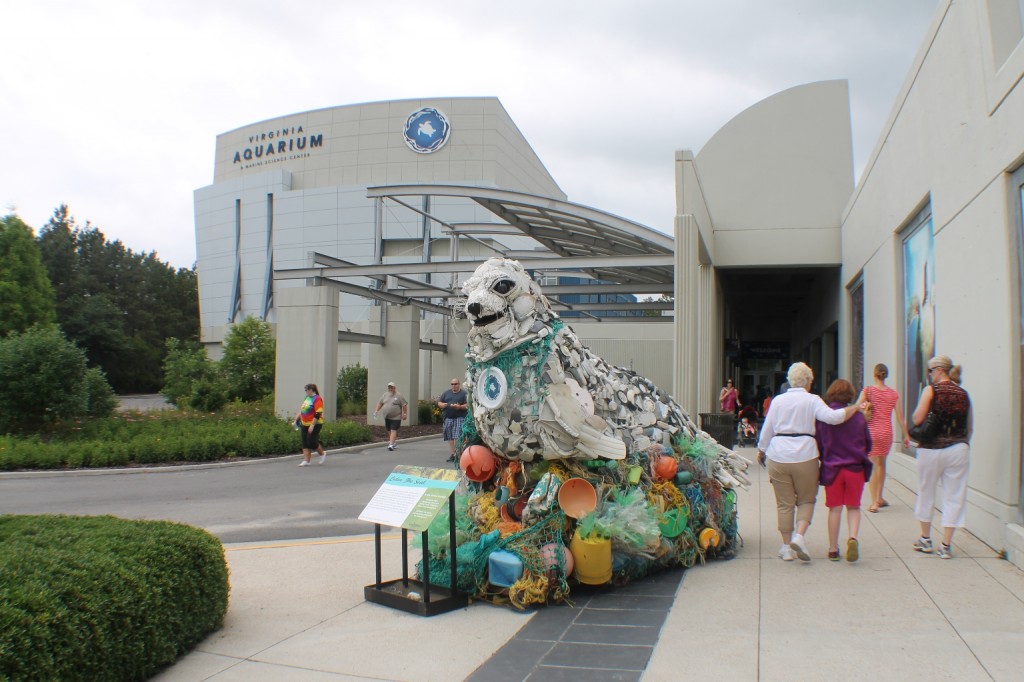
The Virginia Aquarium is located one mile south of the oceanfront resort area in Virginia Beach at 717 General Booth Blvd. Parking is free and trolleys along the oceanfront can take you door to door. We started our aquarium tour with the row of panoramic tanks filled with various fish.
One of my favorite exhibits were the Komodo dragons. The stars of the show here are two Komodo dragons in side-by-side habitats that are spacious and full of naturalistic elements. The enclosure for the male lizard has a series of glass windows at the rear of the exhibit so the lizard actually has a spectacular view of the nearby water and forested region.
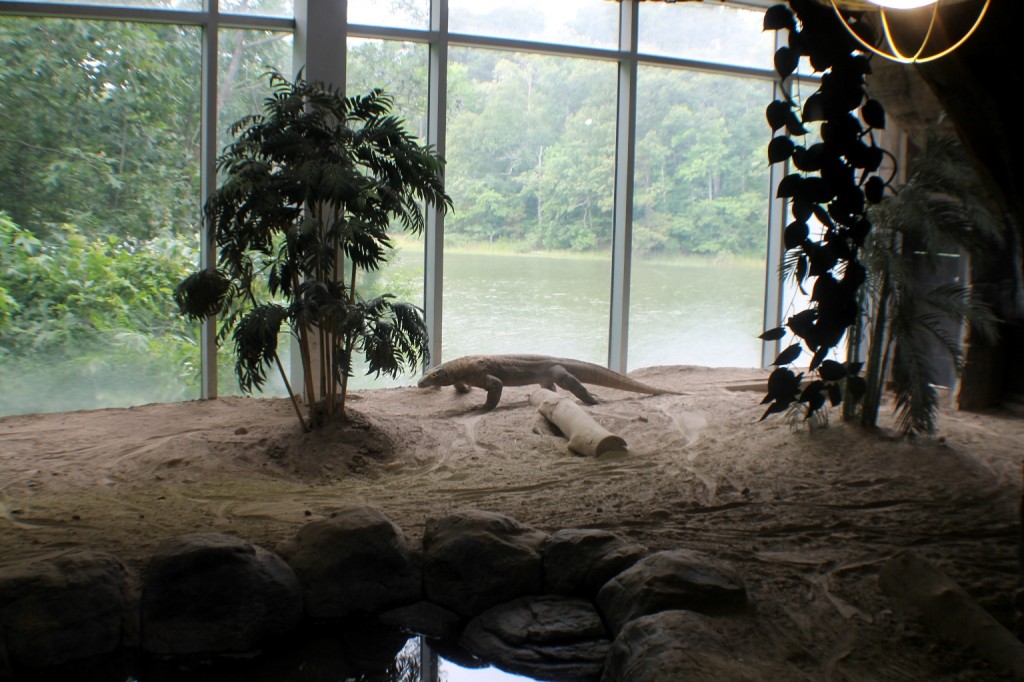
There is a pop-up bubble that is enormously popular with visitors. Children and adults are able to crawl inside a capsule inside the Komodo dragon enclosure to get up close and personal. There are actually 3 Komodo dragons and one of them is always off-exhibit while two others rotate through the pair of habitats. Did you know their saliva has flesh eating bacteria that came from the dead animals they ate so that when they do bite a live animal, the animal will slowly die from the bacteria? Gross, huh!?
The Komodo dragon enclosure immitates an Indonesian volcanic island, a native habitat of Komodo dragons – the world’s largest lizards. Dave was able to take this shot with the dragon’s tongue sticking out. Notice, that the lizard has a forked tongue.
The Virginia Aquarium & Marine Science Center offers more than 800,000 gallons of aquariums to explore. Some of the fascinating creatures you’ll see here include Harbor Seals, Loggerhead Turtles, Great Horned Owl, North American River Otter, Spotted Eagle Ray and Sand Tiger Sharks.
Another dimension in which to explore nature is to see films in the Aquarium’s six-story-high 3D IMAX Theater. We had a great film experience with images jumping out into the seats off a screen that’s big enough to show a life-sized whale.
The two most popular exhibits are, probably, the sea turtles and sharks. Still, part of the wonder of an aquarium is seeing marine species that you don’t see every day.
The loggerhead sea turtles at the Aquarium are located in the Light Tower Aquarium. They share their aquarium habitat with fish and three other sea turtle species, the Kemp’s ridley, an olive ridley and a green turtle. The loggerhead sea turtle gets its name from its exceptionally large head. The loggerhead’s big head accommodates large jaw muscles needed for feeding on hard-shelled crustaceans and mollusks.
Adult loggerheads generally weigh between 250 and 350 pounds, although they have been recorded at more than 500 pounds. The average adult shell, or carapace, length is about three feet. Loggerheads are the most common species of sea turtle found in Virginia waters. Nesting occurs in the eastern United States on beaches from Virginia to Florida. Sea turtles are endangered.
Endangered Kemp’s ridley sea turtles seem almost curious about visitors and allow for some of spectacular photo opportunities.
I was also impressed with some of the smaller turtle exhibits at the aquarium.
The Aquarium’s Restless Planet gallery showcases a 40-foot Red Sea Tunnel aquarium with beautiful tropical fish and six spotted eagle rays.
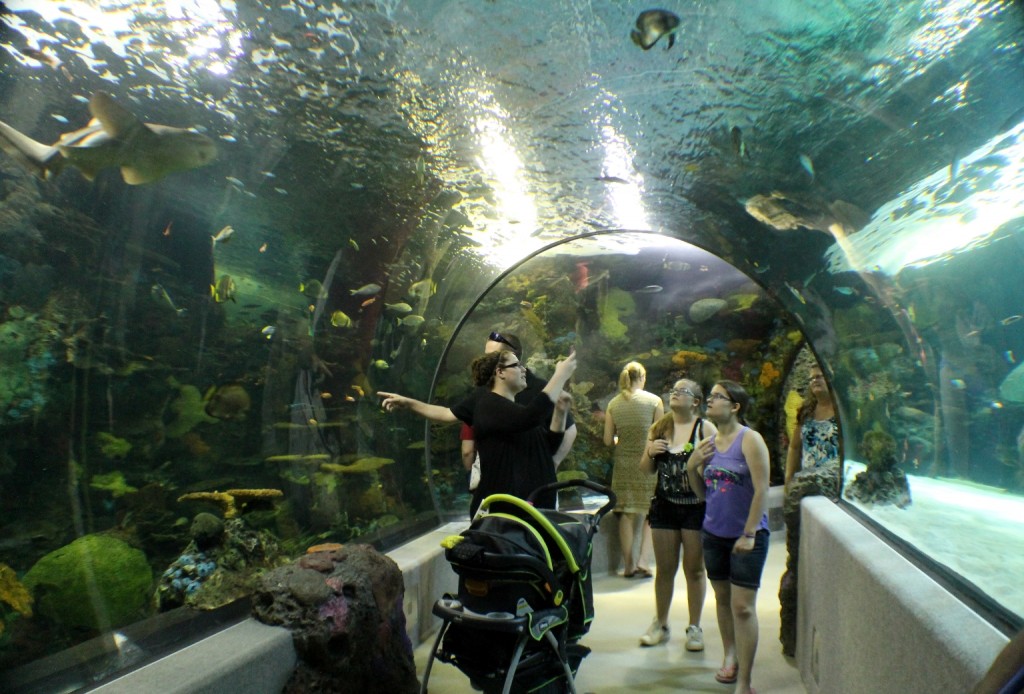
One more picture of Red Sea Walk-Through Tunnel Exhibit.
In order to reach the aquarium’s other building, we had to take Owls Creek Path, a 10-minute walk that meanders through salt marsh and woodland preserve between the Aquarium’s buildings.
Some birds could be spotted on the way.
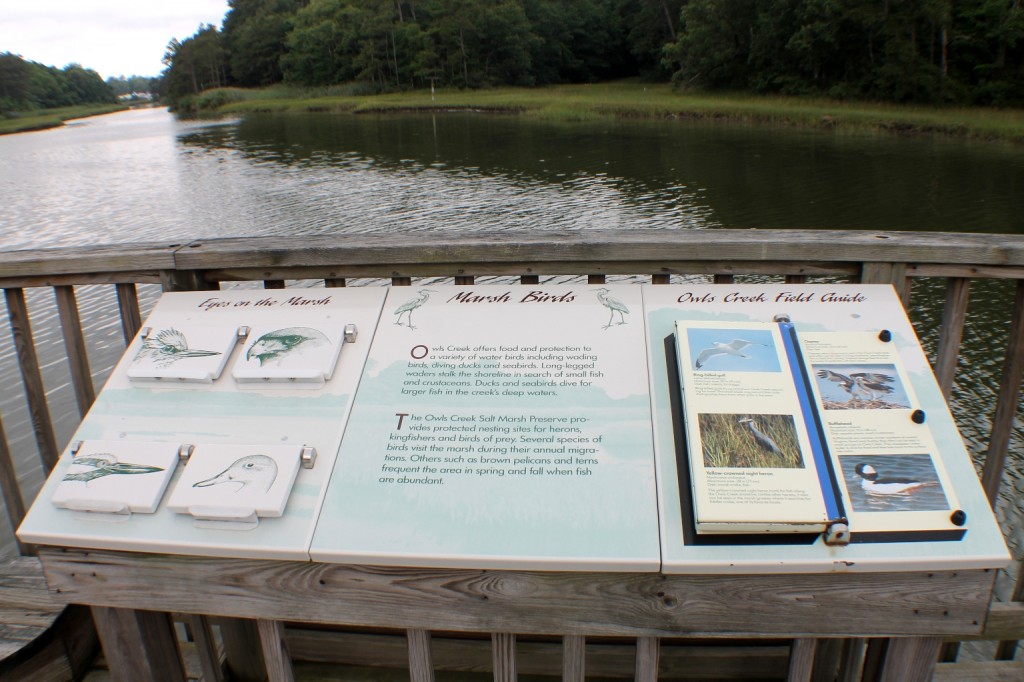
There is a 30-foot observation tower on the Owls Creek Path. Visitors can climb the tower to get a view of Owls Creek from tree-top level. We climbed it too.
We reached the other aquarium building with more of interesting exhibits. The most popular place there was the Sand Tiger Shark tank.
Sand tiger sharks are found throughout the world’s temperate oceans. In the North Atlantic region they can be found from the Gulf of Maine to Florida and into the Gulf of Mexico. Sand tigers are often found in shallow, sandy waters but can be found at depths over 600 feet as well. The sand tiger shark feeds almost entirely on smaller fishes, which it swallows whole. Its long, thin teeth are used to catch and hold on to its prey, but are not useful for chewing things into pieces or biting chunks out of larger prey.
Tiger sharks co-exist with other species of sharks, as well as other fish and rays.
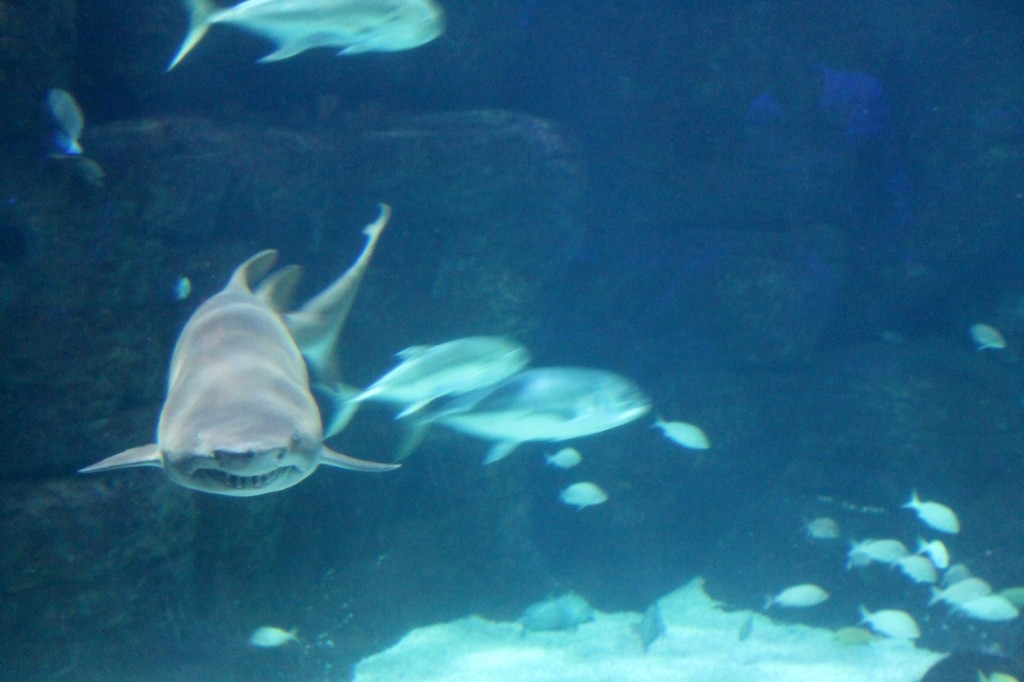
I was impressed with Kaleidoscope Tunnel at the Virginia Aquarium and Marine Science Center. Restless Planet’s final gallery, appropriately entitled the Reflections Gallery, provides visitors with an emotional connection with the environment. A kaleidoscope of more than 100 still and video images and mirrors stimulates thinking about our planet Earth, and inspires personal reflection about what each person might do to help our environment. Our reflections can be seen in many of the tunnel’s little mirrors while I was taking this picture. 🙂
The beautiful tropical fish display always attracts a large crowd.
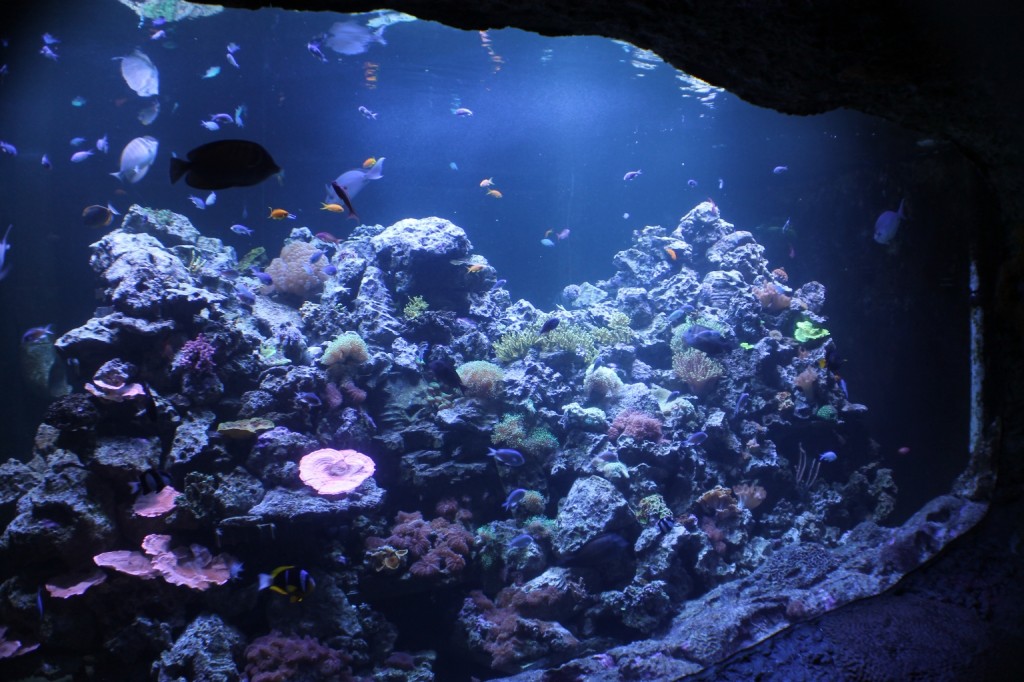
Another fish display in the aquarium’s pathway.
Here is a close-up of pufferfish. Pufferfish are poor swimmers, but can quickly ingest huge amounts of water to turn themselves into a virtually inedible ball several times their normal size.
A trail to Marsh Pavilion leads to the part of the aquarium with the river otters, seahorses, snakes and other marsh dwellers. There is the new Adventure Park along the trail. Kids and adults were climbing into the trees and “flying” among them via zip lines and aerial rope courses in the Adventure Park.
Dave and I enjoyed our walk outside on an elevated deck through a half-acre bird aviary with more than 50 different species of native birds.
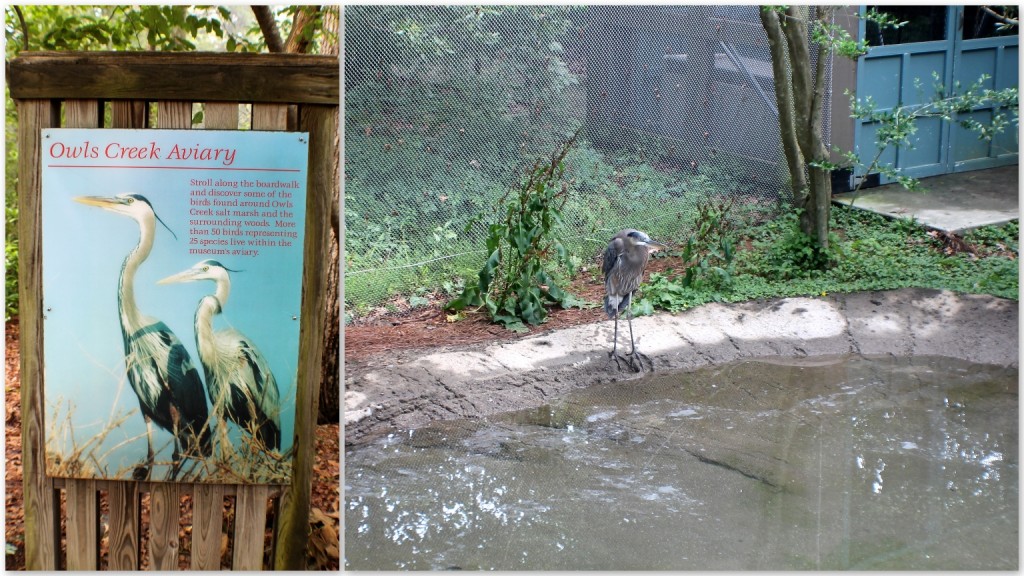
Here is a couple of interesting species from the tanks near the Owls Creek Aviary: Oyster Toadfish – “A face only a mother could love” and Snapping Turtle.
After we left the aquarium and got into our car at the parking lot, we noticed some water jet pack activities and watched them for a few minutes.
